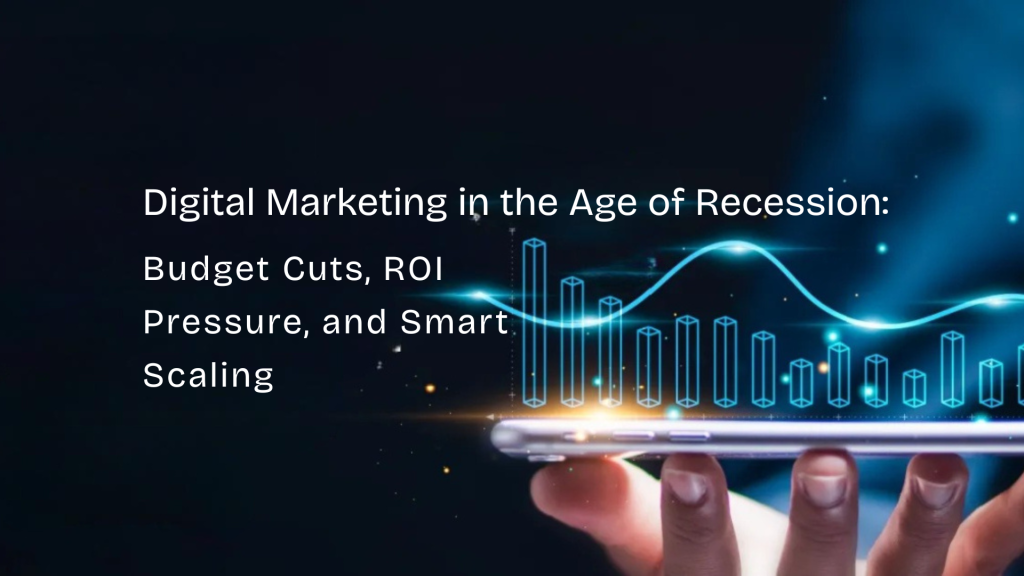The Economic Shift That’s Changing Digital Marketing –
The global economic downturn has altered the business landscape across sectors. Marketing teams, often perceived as cost centers rather than revenue generators, are usually the first to face budget cuts during tough times. As consumer confidence dips, buying cycles become longer, and decision-making becomes more cautious. Digital marketers are now tasked with maintaining relevance in a world where customer expectations remain high but resources are tight. This creates a demand for leaner strategies, more accurate targeting, and heightened accountability.
For many businesses, this means pulling back from broad brand awareness campaigns and instead focusing on initiatives that produce measurable outcomes. Marketers are required to prioritize efficiency and be selective with where and how they engage audiences. The era of “spray and pray” marketing is officially over.
- Marketing budgets are shrinking across industries
- Consumer behavior is changing due to financial insecurity
- Pressure to justify every marketing dollar is increasing
From Branding to ROI: The Shift in Marketing Priorities –
Recessions push companies into survival mode. In this context, branding becomes secondary to performance. While brand-building remains important in the long term, today’s business leaders want marketing that drives pipeline and converts leads—now. The demand for ROI-focused strategies has changed the marketer’s role entirely. Creative storytelling must now be backed by data, and campaign planning must align with financial outcomes.
The key change is how success is measured. Instead of counting likes or shares, marketers are asked to show the impact on sales, qualified leads, or customer acquisition costs. The pressure to deliver has forced teams to adopt more sophisticated attribution models and to work more closely with finance and sales teams to connect the dots from activity to income. Marketing leaders who fail to prove business value are likely to see their budgets reallocated elsewhere.
- Campaigns must connect directly to revenue or conversions
- Vanity metrics like impressions and likes are no longer enough
Smart Scaling: Doing More With Less –
Budget cuts don’t mean marketing stops—they mean marketing gets smarter. Smart scaling is the practice of maximizing impact while minimizing cost. This requires marketers to take a hard look at which channels produce the highest returns, and which tasks can be automated or outsourced. The focus shifts to sustainability—producing results that aren’t dependent on endless ad spend, but rather on smart strategy, strong messaging, and efficient execution.
Content marketing, SEO, and email have become heroes in this environment. These channels cost less over time and deliver compounding returns. Additionally, teams are looking to consolidate their tech stacks, using fewer tools to do more. Repurposing content across platforms, using data to guide creative decisions, and reducing redundant processes are no longer optional—they’re survival tactics.
The Rise of First-Party Data and Owned Channels –
As third-party cookies continue to disappear and ad platforms become less reliable for targeting, the spotlight has shifted to first-party data. Brands that have invested in collecting and managing their own customer data—through signups, downloads, purchase history, and engagement tracking—now hold a competitive edge. First-party data allows marketers to craft personalized, privacy-compliant campaigns that feel relevant and build trust.
In parallel, there’s a renewed focus on owned channels—your website, email list, blog, and community. These assets aren’t subject to algorithm changes or rising ad costs. Email marketing, for instance, continues to be one of the highest-ROI channels, especially when supported by solid segmentation and automation. A brand’s ability to directly reach its audience without paying gatekeepers is more important than ever.
- First-party data is essential for long-term targeting
- Email marketing remains one of the highest ROI tools
- Social algorithms are unpredictable—own your channels
- Personalization is only possible with clean, segmented data
Collaboration and Agility: The New Marketing Muscle –
In this new climate, marketing cannot operate in isolation. Budget constraints force teams to collaborate more closely across departments—especially with sales, product, and customer service. This creates opportunities to improve messaging, align on customer pain points, and deliver more cohesive campaigns. Marketing’s role expands from just promotion to being a central voice in customer experience and business growth.
Conclusion –
Recessions challenge businesses to rethink everything—strategy, spending, and storytelling. But they’re not the end of marketing—they’re the beginning of better marketing. This is a time to refocus on what works, eliminate what doesn’t, and invest in sustainable growth tactics. Brands that lean into data, agility, and genuine connection with their audiences will not only survive—they’ll be better prepared when the economy rebounds.
Marketing in a recession is not about doing more with less. It’s about doing the right things with what you have. And those who adapt quickly are the ones who come out ahead.

